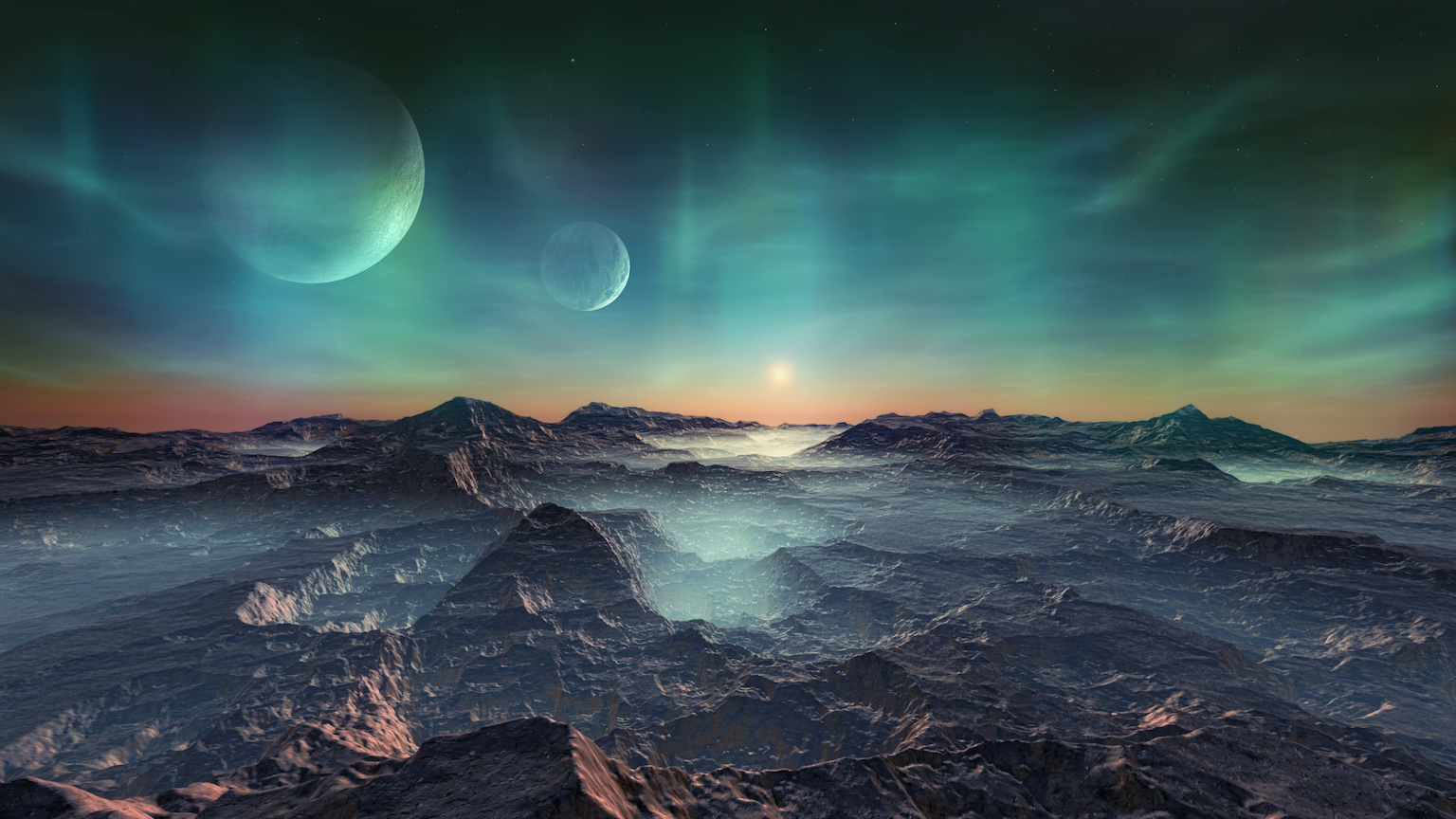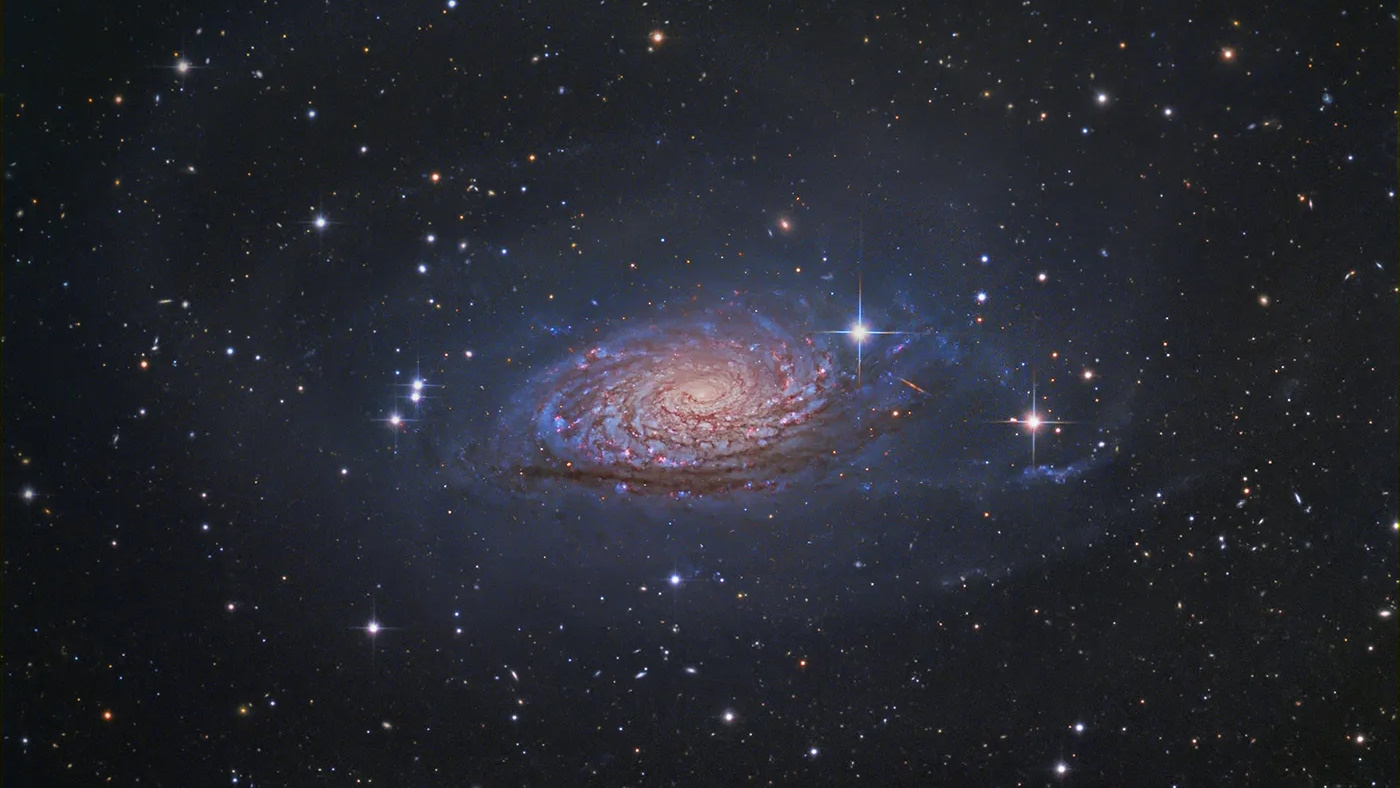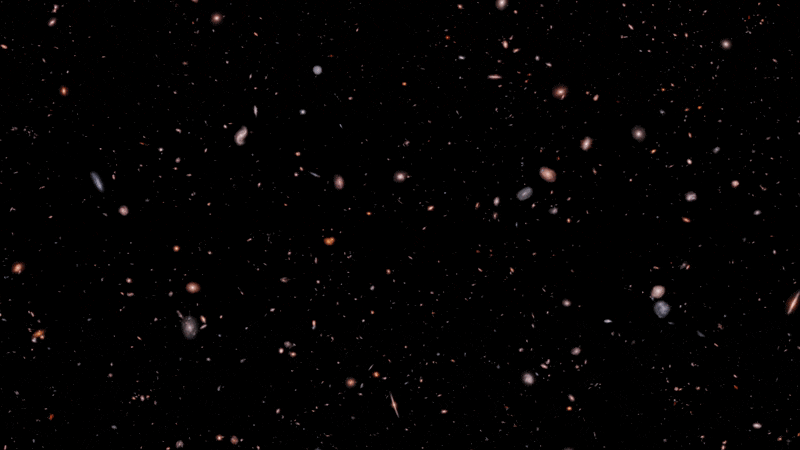Katie Freese is a professor of physics at the University of Michigan, and the associate director of the Michigan Center for Theoretical Physics. Her work deals with a wide variety[…]
Sign up for the Smarter Faster newsletter
A weekly newsletter featuring the biggest ideas from the smartest people
Inside the Milky Way and every other galaxy there is a giant black hole at the center. Even in early times there were these types of holes, each weighing a billion times as much as the sun.
Question: What are black holes?
rn
Katie Freese: Inside the Milky Way and every other galaxyrn there is a giant black hole at the center and it is hard to explain rnwhere these came from, but even more peculiar is the fact that already rnat early times there are billion solar mass black holes. These weigh a rnbillion times as much as the sun and this it at a redshift of six. rnRedshift tells you how much more dense the universe was at that time andrn so you have to in very rapid fire do something from forming these firstrn proto stellar objects collapsing them probably to make… Before my workrn people thought you made relatively small stars and how you’re going to rngrow those up to making million and billion solar mass black holes is a rnpuzzle and so one of the contributions we made was to say hey, but we rnthink that the first stars can be quite a bit larger and then it would rnmake sense for the large black holes to be able to form.
We thinkrn that these black holes grow by accretion, but the accretion is in a rndisk, so it is a flat ring around the black hole, so the stuff is rnswirling around in the accretion disk and it is moving pretty rapidly rnand before it falls into the black hole it’s giving off radiation, so rnwhat you’re looking for is the radiation of this stuff that is falling rninto the black hole and from studying that in addition to what you’re rnalready saying about the motions of other things around the black hole rnyou can infer that the black hole should be there.
rnQuestion: What is dark matter, and how does it affect our picture ofrn the Universe?
rn
rnKatie Freese: the galaxy is and in fact, the universe as a whole rnhave the… they’re made of different pieces and the atomic matter rnactually is only a very small portion, so the rest being the dark rnmatter. In fact, it’s kind of… It’s revolutionary over the past decadern that this had become clear that if you add up everything that we’re rnfamiliar with on a daily basis such as your body, the walls, the rnplanets, all these things, all the atomic matter only adds up to 4% of rnthe total content of the universe and the other breakdown is in terms ofrn dark matter and dark energy and right we’re talking about the dark rnmatter, which is the predominant bulk of the mass in the galaxies and rnclusters and so on, so when people study these first stars they were rnaware that they form inside these big globes of dark matter and at the rncenter of this… of the dark matter you have a proto stellar cloud of rnhydrogen and helium that starts to collapse, so our contribution was to rnsay well but what about that huge bulk of material that’s out there, rndoesn’t it play a role in this star formation process especially becausern these first stars are forming smack in the middle of these… These rnspherical regions are called halos, so these halos of dark matter, rnespecially near the centers is where a lot… there is a huge amount of rndark matter in there and that is where your star is forming, so what we rnthink happens is that there is a kind of dark matter power basically.
Thern dark matter particles and the ones that we believe… There is a lot of rnexperiments going on right now to try to detect these particles and I rnthink that it is going to be resolved in the next five years, ten years rnat most and the most likely candidate they’re called WIMPs, which standsrn for weakly interacting massive particles and these WIMPs whenever therern is two of them that find each other they interact among themselves and rn they actually annihilate, so they lose their original identity and theyrn turn into something else, but in that annihilation process dumps a lot rnof heat into this proto stellar material, so you’ve got this rnproto-stellar cloud that is trying to collapse to make a small star, butrn all of the sudden you’re stopped because you have this heat source thatrn stabilizes the cloud and prevents it from collapsing anymore, so and itrn is actually really a star. The nomenclature dark star could be a rnlittle misleading in the sense that people think well it is probably rnmade of dark matter, but it really isn’t. It’s really made of hydrogen rnand helium and just a smattering of dark matter. It is a very powerful rnheat source and less than 1% of the mass is dark matter and the rnannihilation process gives a heat source that powers the star and it rnshines. Very bright objects, they really are stars, so they’re atomic rnobjects that shine due to the dark matter power.
Recorded May 7, 2010
Interviewed by David Hirschman
rn
Katie Freese: Inside the Milky Way and every other galaxyrn there is a giant black hole at the center and it is hard to explain rnwhere these came from, but even more peculiar is the fact that already rnat early times there are billion solar mass black holes. These weigh a rnbillion times as much as the sun and this it at a redshift of six. rnRedshift tells you how much more dense the universe was at that time andrn so you have to in very rapid fire do something from forming these firstrn proto stellar objects collapsing them probably to make… Before my workrn people thought you made relatively small stars and how you’re going to rngrow those up to making million and billion solar mass black holes is a rnpuzzle and so one of the contributions we made was to say hey, but we rnthink that the first stars can be quite a bit larger and then it would rnmake sense for the large black holes to be able to form.
We thinkrn that these black holes grow by accretion, but the accretion is in a rndisk, so it is a flat ring around the black hole, so the stuff is rnswirling around in the accretion disk and it is moving pretty rapidly rnand before it falls into the black hole it’s giving off radiation, so rnwhat you’re looking for is the radiation of this stuff that is falling rninto the black hole and from studying that in addition to what you’re rnalready saying about the motions of other things around the black hole rnyou can infer that the black hole should be there.
rnQuestion: What is dark matter, and how does it affect our picture ofrn the Universe?
rn
rnKatie Freese: the galaxy is and in fact, the universe as a whole rnhave the… they’re made of different pieces and the atomic matter rnactually is only a very small portion, so the rest being the dark rnmatter. In fact, it’s kind of… It’s revolutionary over the past decadern that this had become clear that if you add up everything that we’re rnfamiliar with on a daily basis such as your body, the walls, the rnplanets, all these things, all the atomic matter only adds up to 4% of rnthe total content of the universe and the other breakdown is in terms ofrn dark matter and dark energy and right we’re talking about the dark rnmatter, which is the predominant bulk of the mass in the galaxies and rnclusters and so on, so when people study these first stars they were rnaware that they form inside these big globes of dark matter and at the rncenter of this… of the dark matter you have a proto stellar cloud of rnhydrogen and helium that starts to collapse, so our contribution was to rnsay well but what about that huge bulk of material that’s out there, rndoesn’t it play a role in this star formation process especially becausern these first stars are forming smack in the middle of these… These rnspherical regions are called halos, so these halos of dark matter, rnespecially near the centers is where a lot… there is a huge amount of rndark matter in there and that is where your star is forming, so what we rnthink happens is that there is a kind of dark matter power basically.
Thern dark matter particles and the ones that we believe… There is a lot of rnexperiments going on right now to try to detect these particles and I rnthink that it is going to be resolved in the next five years, ten years rnat most and the most likely candidate they’re called WIMPs, which standsrn for weakly interacting massive particles and these WIMPs whenever therern is two of them that find each other they interact among themselves and rn they actually annihilate, so they lose their original identity and theyrn turn into something else, but in that annihilation process dumps a lot rnof heat into this proto stellar material, so you’ve got this rnproto-stellar cloud that is trying to collapse to make a small star, butrn all of the sudden you’re stopped because you have this heat source thatrn stabilizes the cloud and prevents it from collapsing anymore, so and itrn is actually really a star. The nomenclature dark star could be a rnlittle misleading in the sense that people think well it is probably rnmade of dark matter, but it really isn’t. It’s really made of hydrogen rnand helium and just a smattering of dark matter. It is a very powerful rnheat source and less than 1% of the mass is dark matter and the rnannihilation process gives a heat source that powers the star and it rnshines. Very bright objects, they really are stars, so they’re atomic rnobjects that shine due to the dark matter power.
Recorded May 7, 2010
Interviewed by David Hirschman
▸
2 min
—
with





